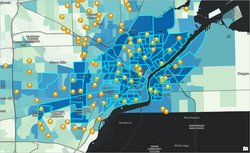Turn on suggestions
Auto-suggest helps you quickly narrow down your search results by suggesting possible matches as you type.
Cancel
ArcGIS Tutorials Blog - Page 6
Turn on suggestions
Auto-suggest helps you quickly narrow down your search results by suggesting possible matches as you type.
- Home
- :
- All Communities
- :
- Learning
- :
- ArcGIS Tutorials
- :
- ArcGIS Tutorials Blog
- :
- ArcGIS Tutorials Blog - Page 6
Options
- Mark all as New
- Mark all as Read
- Float this item to the top
- Subscribe to This Board
- Bookmark
- Subscribe to RSS Feed
Subscribe to This Board
Latest Activity
(97 Posts)
Occasional Contributor
08-03-2022
03:32 PM
2
0
790
Esri Contributor
07-13-2022
12:38 PM
3
1
889
Esri Contributor
07-07-2022
07:00 AM
1
0
407
Esri Regular Contributor
05-27-2022
12:19 PM
3
0
771
142 Subscribers
Popular Articles
Welcome to Learn ArcGIS on GeoNet!
HeatherSmith
Esri Alum
9 Kudos
0 Comments
Introducing: GIS for Climate Resilience curriculum
AngelaDuran
Esri Contributor
6 Kudos
0 Comments
We’ve made some changes to our site
RebekaAlvarez-Heck
Esri Contributor
6 Kudos
5 Comments

































